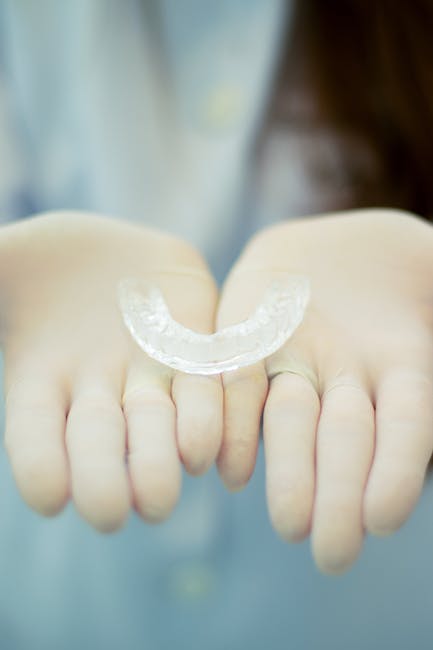How Long To Wear Invisalign Retainer

Invisalign retainers are becoming increasingly popular among orthodontic patients for their convenience and comfort. They are typically worn for about a year and a half, but the exact amount of time you will need to wear your retainer will depend on your individual circumstances. In this article, we’ll discuss how long you should wear an Invisalign retainer and what can affect the length of time.The recommended wear times for Invisalign retainers is 22 hours a day for the first 6 months. After that, it is recommended to wear them at least 10 hours a day, preferably while sleeping. It is important to wear your retainers as often as possible in order to maintain the results of treatment.
What Happens If You Don’t Wear Invisalign Retainers Long Enough?
Not wearing your Invisalign retainers long enough can have a range of consequences. Without wearing your retainers, your teeth can shift back to their original position. This can cause changes in the alignment of your bite and the way your upper and lower teeth fit together. It may also affect the overall shape of your face, as well as the health of your gums and jaw joints.
Not wearing your retainers for long enough can also cause you to need additional treatments to maintain the results of Invisalign. This may include additional orthodontic adjustments or even new Invisalign treatment if significant shifting has occurred.
In addition, not wearing your retainers for long enough could lead to an increase in cavities due to plaque buildup between teeth that are no longer held together tightly by braces or retainers. Gum disease is also a possible side effect of not following through with wearing retainers after treatment with Invisalign.
It is important to wear retainers as prescribed by your orthodontist if you want to maintain the results achieved with Invisalign treatment. Wearing them regularly and for the duration recommended by your doctor will help ensure that you don’t experience any of these unwanted consequences from not wearing them long enough.
How Often Should You Wear Your Invisalign Retainer?
Wearing an Invisalign retainer is essential to maintaining the results of your orthodontic treatment. Without wearing it, your teeth will gradually shift back to their pre-treatment positions. That’s why it’s so important to wear your retainer consistently and correctly. But how often should you be wearing it?
The answer depends on the type of retainer you have and the instructions given to you by your orthodontist. Generally, you should be wearing a clear aligner/Invisalign retainer for at least 22 hours a day, although this can vary depending on the severity of the case. If you have a Hawley or Essix retainer, then you should wear it for 10-14 hours a day at minimum.
It is also important that you clean your retainer regularly in order to keep bacteria and plaque from building up on it. Cleaning with a toothbrush and toothpaste is usually sufficient, but if you want to go the extra mile then there are special cleaning solutions available specifically for retainers.
Follow your orthodontist’s instructions closely when it comes to wearing and cleaning your Invisalign retainer in order to ensure that your teeth remain in their new positions after treatment is complete.
Can You Sleep with Your Invisalign Retainer in?
Invisalign retainers are a great way to straighten your teeth, but can you sleep with them in? The simple answer is yes – you can sleep with your Invisalign retainer in, although it is not recommended. Wearing your retainer overnight will help to keep your teeth in their new position, but it can also cause some problems.
Wearing your retainer overnight can lead to an increased risk of gum disease and tooth decay, as bacteria and plaque build up around the retainer. It can also be uncomfortable for some people, as the retainer puts pressure on the gums and teeth while you sleep. In addition, sleeping with your Invisalign retainer in may cause it to wear out faster than it would if only worn during the day.
It is best to follow the instructions given by your orthodontist when it comes to wearing your Invisalign retainer. Most orthodontists recommend that you only wear the retainer during the day and take it out at night before going to bed. This will help ensure that your teeth stay in their new position while also avoiding any potential issues caused by sleeping with the retainer in.
Does Wearing Your Invisalign Retainer All the Time Help it Work Faster?
Wearing your Invisalign retainer all the time can help it work faster, however, it is not recommended. The American Association of Orthodontists recommends wearing your retainer for 22 hours a day during treatment. This will ensure that your teeth remain in place and that you get the best results possible. Wearing your retainer all the time could cause problems in the long run, such as tooth decay or gum disease.
When wearing your Invisalign retainer, it is important to take regular breaks from wearing it. It is recommended to take a break of at least an hour per day while wearing your retainer. This will help reduce the amount of bacteria that builds up in the mouth and prevent damage to the mouth and teeth. Additionally, taking regular breaks will allow you to go about your normal activities without any discomfort or irritation from wearing your retainer all day.
It is also important to make sure that you are cleaning and caring for your Invisalign retainer properly. It is recommended that you brush it twice a day with toothpaste and floss it daily in order to remove any plaque or food particles that may have built up on it during wear. Additionally, soaking it in a denture cleaner once a week can help keep bacteria levels low and make sure that your retainer stays clean and bacteria-free.
In order for Invisalign to work effectively, following the instructions provided by your orthodontist is important. Wearing your retainer for 22 hours a day has been proven to be more successful than wearing it all the time, so following these guidelines is key for achieving the best results possible with Invisalign treatment. Taking regular breaks from wearing the retainer will help ensure that you get optimal results without causing any damage to your teeth or gums in the long run.

The Benefits of Wearing Your Retainer for a Long Time
Wearing a retainer is essential for keeping your teeth in the correct position after orthodontic treatment. It’s important to wear it as long as your orthodontist has instructed, and even longer if you want to maintain the results of your treatment. There are many benefits to wearing your retainer for a long time, such as:
Improved Appearance: Wearing a retainer can help ensure that your teeth remain in the correct positions and don’t shift over time. This can help improve your overall appearance and give you an attractive smile.
Reduced Risk of Decay: Keeping the teeth in their proper positions can help reduce the risk of developing cavities or other types of decay. When teeth are properly aligned, it’s easier to clean them and keep them free from plaque and other bacteria that can cause decay.
Improved Comfort: Wearing a retainer for a long time can help reduce discomfort associated with misaligned teeth, such as jaw pain or headaches. It can also make it easier to eat and speak without difficulty.
Preventive Care: Wearing a retainer for an extended period of time can help prevent future problems with misaligned teeth, reducing the need for additional orthodontic treatment down the line. This can save you both time and money in the long run.
In short, wearing your retainer for an extended period of time is beneficial in many ways, from improving appearance to providing preventive care that will save money down the road. Talk to your orthodontist about how long you should wear it and follow their instructions carefully to get the most out of your investment in braces or other orthodontic treatments.
How Long Should You Wear Your Retainer on a Daily Basis?
Wearing a retainer is an important part of maintaining good oral health. A retainer helps to keep teeth in their correct positions after braces have been removed. It is important to wear your retainer for the recommended amount of time each day for optimal results. The exact amount of time that you should wear your retainer will vary depending on your individual needs, but generally the recommended range is between 6 and 12 hours per day.
It is important to follow your orthodontist’s instructions when it comes to wearing your retainer. They will be able to provide specific instructions regarding the length of time that you should be wearing your retainer each day. If you are unable to wear it for the full recommended amount of time each day, it is best to wear it at night while you are sleeping, as this will help keep your teeth in their correct positions.
When first starting out with a retainer, it can feel uncomfortable or strange. However, after a few days or weeks of wearing it, you should start to get used to it and find that it fits better and feels more comfortable. If you continue to experience pain or discomfort when wearing the retainer, talk to your orthodontist as they may be able to adjust the fit for you or recommend other options.
It is important to remember that even though it may not seem like a big deal if you skip wearing your retainer for one night or even a few days, over time this can cause teeth to shift back into their original positions and undo all the progress made from braces or other treatments. To ensure that teeth remain in their correct positions and stay healthy, make sure that you wear your retainer for at least 6 hours per day as recommended by your orthodontist.
Can Wearing an Invisalign Retainer Affect How Long Delta-8 Stays in My System?
Wearing an Invisalign retainer can impact your overall oral health, but it does not significantly influence the duration of delta8 effects and their aftermath. However, individuals may experience variations in how they metabolize substances, potentially altering their personal experience with delta-8 while using aligners.
How Long Should You Wear Your Retainer at Night?
Wearing your retainer at night is essential for maintaining a healthy, straight smile. However, it can be difficult to figure out how long you should wear your retainer for. The answer depends on the type of retainer you have and the severity of your orthodontic condition.
If you have a removable plastic retainer, it is typically recommended that you wear it every night while sleeping. This helps to ensure that your teeth remain in the correct position after braces are removed or other orthodontic treatments are completed. For more severe cases, it may be necessary to wear the retainer for longer periods during the day as well as at night.
For patients with fixed retainers, such as bonded retainers or lingual retainers, it is usually recommended that they be worn 24 hours a day for at least a few months after treatment is completed. This helps to ensure that the teeth remain in the correct position and do not shift back into their original positions. After this initial period of wearing the fixed retainer 24 hours per day, it is generally recommended that the patient wears it only at night while sleeping.
It is important to follow your orthodontist’s instructions when it comes to wearing your retainer, as this will help ensure that your teeth remain in their corrected positions and maintain your beautiful smile long-term!

Conclusion
Invisalign retainers are a great way to correct misalignment of your teeth and smile. They are comfortable, discreet, and easy to use. However, it is important to wear them for the full recommended time in order to achieve the desired results. Most people should wear their Invisalign retainer for at least 22 hours a day for at least 6 months after treatment is finished or until otherwise advised by their orthodontist. It is also important to clean the retainer regularly and store it in its case when not in use. Following these simple steps will ensure that your Invisalign retainer stays in good condition and that you can enjoy the benefits of a beautiful smile for many years to come.
Overall, Invisalign retainers are a great way to improve your smile without having to commit to wearing metal braces for long periods of time. With proper care and maintenance, they can help you achieve a beautiful smile with minimal effort.
